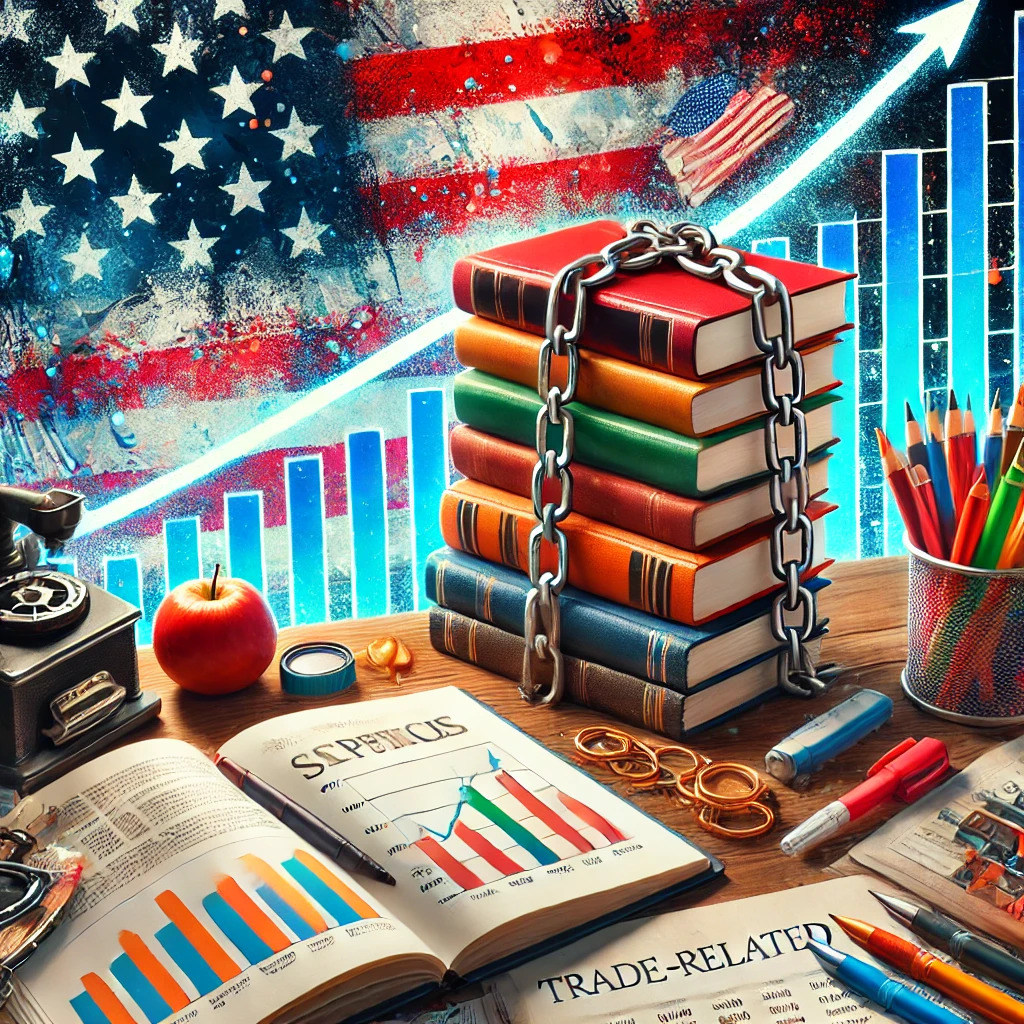President Donald Trump’s recent imposition of tariffs on imports from China, Canada, and Mexico has sent shockwaves through various industries, including the book publishing and stationery sectors. These tariffs, which include a 10% levy on Chinese goods and a 25% duty on most Canadian and Mexican imports, are expected to disrupt global supply chains, increase production costs, and ultimately lead to higher prices for consumers. Here’s an in-depth look at how these tariffs will impact the book publishing industry, book prices, and stationery costs.
The Effects of Trump’s Tariffs on the Publishing Industry
The publishing industry relies heavily on international printing and manufacturing, with many books printed in China and Canada to reduce costs. The new tariffs will significantly increase production costs for publishers, particularly for small and independent publishers who operate on thin profit margins. For example, a publisher that spends $1 million annually on printing in China could see an additional $100,000 in costs due to the 10% tariff. Similarly, Canadian-printed books, which are popular in the U.S. market, will face a 25% tariff, further driving up costs.
Small and independent publishers may struggle to absorb these additional costs, potentially leading to reduced print runs, delayed new titles, or even closures. Larger publishers may pass these costs on to consumers, but they could also explore shifting production to domestic or alternative international sources. However, U.S. printing facilities are generally more expensive and lack the specialized expertise of Canadian and Chinese printers, which could lead to longer-term price increases and potential declines in product quality.
The Effects of Trump’s Tariffs on Book Prices
The tariffs are expected to lead to higher book prices for consumers. Publishers and retailers, faced with increased production and import costs, will likely pass these expenses on to consumers. For example, a $20 book printed in China could see a price increase of $2 or more due to the 10% tariff. Similarly, Canadian-printed books, such as comics and periodicals, could see price hikes of 25%, pushing the cost of a $4 comic book to $5.
Retailers, already operating on tight margins, may have no choice but to pass these costs on to consumers. This could lead to reduced sales, as higher prices may deter buyers, especially for non-essential or luxury items like specialty books and graphic novels. Independent bookstores, which are already struggling to compete with online retailers, may face additional challenges in attracting customers.
The Effects of Trump’s Tariffs on Stationery Prices
The stationery industry, which includes items such as notebooks, pens, and art supplies, is also heavily reliant on imports from China. The 10% tariff on Chinese goods will likely result in higher prices for these products. For example, a $10 notebook could increase to $11 or more due to the tariff. Similarly, art supplies, which are often manufactured in China, could see significant price hikes.
Small businesses in the stationery industry, which often operate on thin profit margins, may struggle to absorb the additional costs. Some may be forced to reduce their inventory or raise prices, potentially losing customers in the process. Larger retailers may have more flexibility, but they, too, will face challenges in managing these increased costs.
Summary: Book Lovers’ Wallets Will Suffer from These New Tariffs
In summary, Trump’s new tariffs are poised to increase the costs of books and stationery, disrupt supply chains, and challenge the viability of small publishers and retailers. Consumers should brace for higher prices and potential shortages in the coming months. Book lovers, in particular, will feel the pinch as their favorite titles become more expensive, and stationery enthusiasts may need to dig deeper into their pockets for everyday items.
The publishing and stationery industries will need to adapt to these new economic realities, but in the short term, the burden will fall on consumers. As the situation evolves, stakeholders will need to explore innovative solutions to mitigate the impact of these tariffs.
